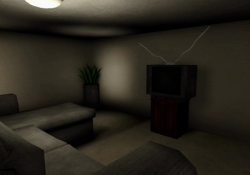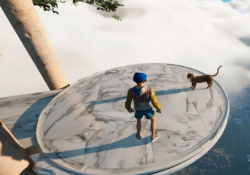Dreamcore is an atmospheric exploration game that places players in surreal and dreamlike spaces without clear objectives. The environments are inspired by liminal aesthetics—vast, empty areas like endless hallways, indoor pools, and deserted suburbs. The lack of traditional gameplay mechanics creates a quiet, reflective experience where the focus is on navigation, observation, and immersion rather than action or narrative.
Immersion Through Environment
The game’s strength lies in its use of space and design. Every environment feels disconnected from reality, with familiar architecture stretched into impossible layouts. Players walk through looping corridors, silent residential blocks, and tiled rooms that seem to repeat endlessly. These spaces are not filled with enemies or danger, but with a subtle sense of wrongness that grows the longer you explore. Lighting, echoes, and spatial repetition help build the tension slowly and without confrontation.
Key gameplay features include:
- Exploring expansive, liminal-style maps
- Finding small visual clues like markings, lighting shifts, or misplaced objects
- Collecting tools such as a flashlight to access dark or hidden areas
- Interpreting subtle sound changes to discover progression
- No combat or dialogue—only atmospheric storytelling
These elements encourage players to focus on detail and environment.
A Slow, Personal Journey
Dreamcore avoids traditional storytelling. There are no characters, no voiceovers, and no cutscenes. Instead, the game invites players to interpret the world based on experience and emotion. You may find yourself lost in a hallway that loops subtly, or standing in an open yard that seems too perfect. The experience becomes less about escape and more about understanding the structure itself—and the feelings it evokes. This meditative pacing separates it from standard exploration games.
Growing World, Minimal Guidance
Currently, Dreamcore includes two large areas with more in development. Each area has its own atmosphere and rules, but none explain themselves directly. There are no maps or missions, just space and the player. Those looking for freedom to move without pressure may find the format refreshing. Others might struggle with the absence of direction. As new areas are added, the world is expected to expand in strange and unexpected ways.
Dreamcore is less about solving and more about sensing. It presents an interactive environment where what you feel and notice matters more than what you accomplish. For players who enjoy minimalist design and open-ended interpretation, it offers a quiet space to explore the unknown at their own pace.





























